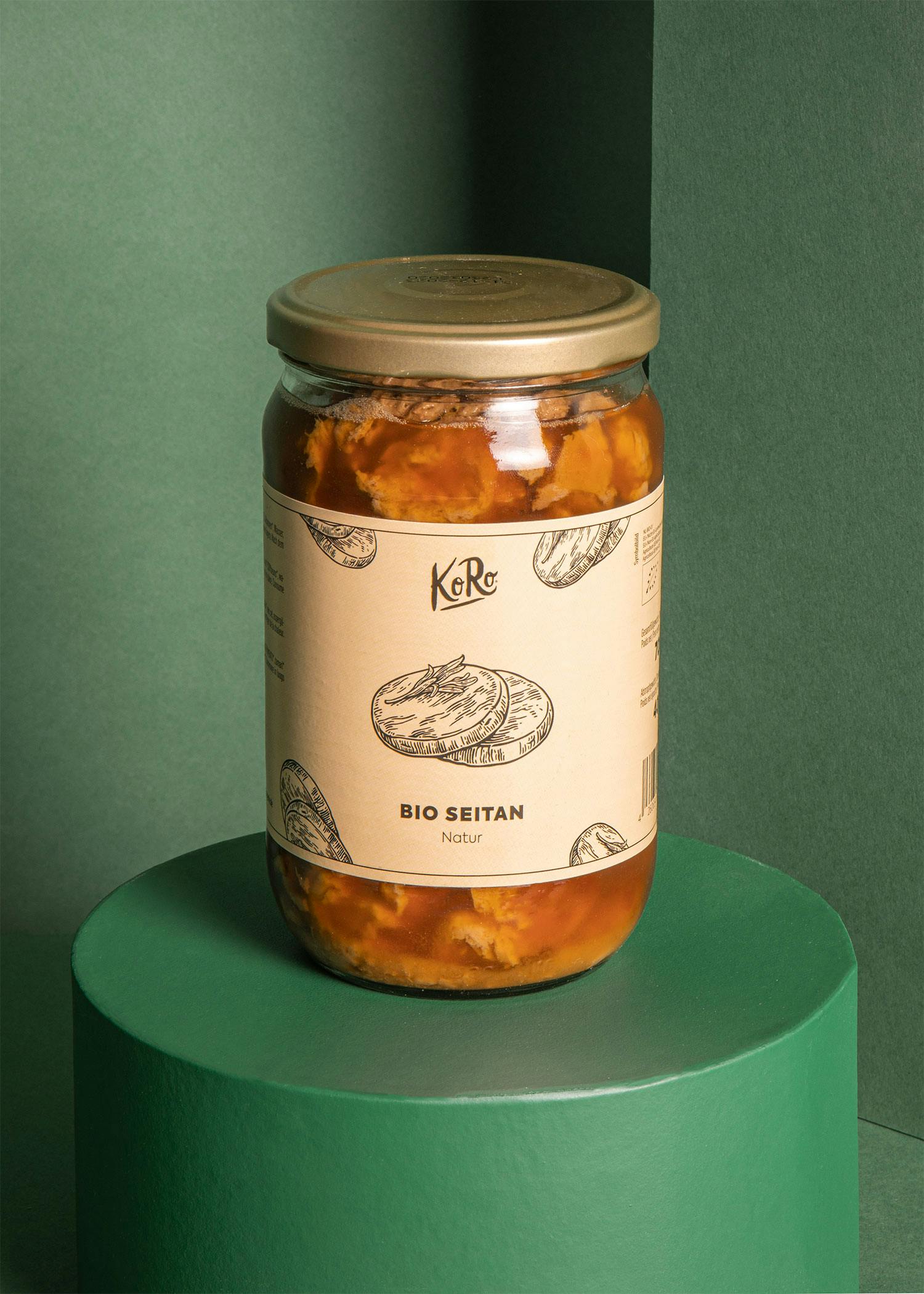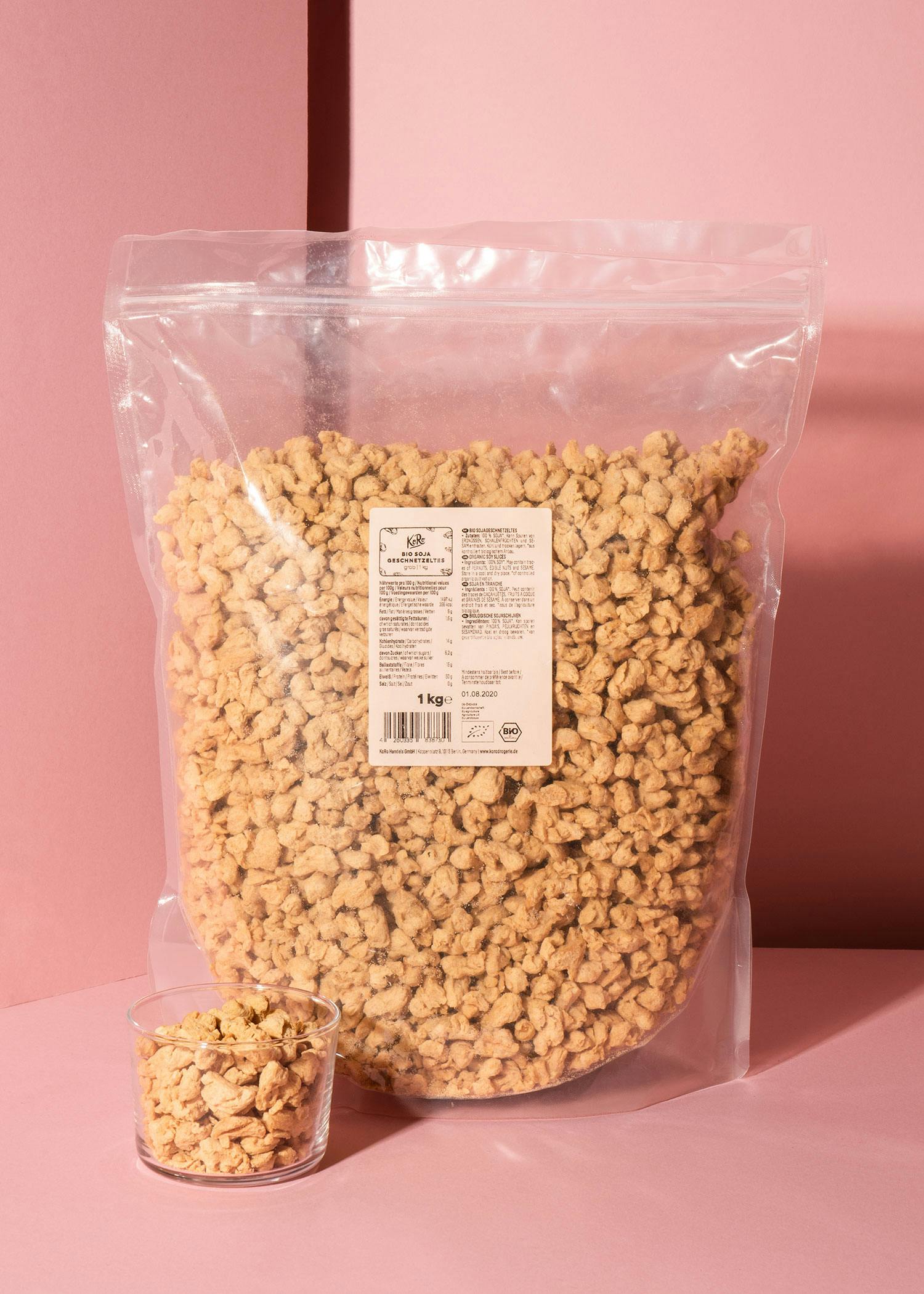Not all meat substitutes are the same
Do you sometimes find yourself studying the seemingly ever-increasing selection of meat substitutes for minutes every time you go shopping? We feel the same way! To save you time, we'll take a closer look at the products and explain how you can recognize a suitable meat alternative. Because the differences are huge. Let's start with the most obvious difference when looking at the ingredients list: The amount of ingredients. This can indicate that the product contains a lot of additives, but it doesn't have to. That's why it's worth taking a closer look. Have vitamins been added to the meat alternative that are otherwise particularly common in meat, such as vitamin B12? Or have a variety of different spices simply been added? Some ingredients are not clear to some consumers at first glance, e.g. dextrose is the technical term for glucose. This allows the industry to disguise ingredients that are unattractive to the customer, for example. It is therefore not always possible to generalize that a long list of ingredients means a rather unfavorable meat substitute product. However, the more terms you have to research when reading the packaging, the higher the probability that the product contains a lot of additives.
Flavor enhancers, preservatives and co.
What are additives and which ones are there? Additives are used to improve various properties of a food. These properties include shelf life, taste, consistency and color. For example, preservatives are often added to foods that are intended to have a long shelf life. Many manufacturers want their meat substitutes to resemble the color of imitation meat and use colorants accordingly. Here you can either use a coloring food, these foods have a high coloring power and may have already triggered a crisis or two in you when wearing a white top. To use them for coloring, the foods are dried and processed into powder, for example carrot or beetroot powder. Alternatively, a natural or synthetic dye is used. Natural colorants have a plant, mineral or animal origin and must first be extracted from minerals, for example. Synthetic colorants, on the other hand, do not occur in nature and are created artificially. These two categories are labeled with E numbers, as are all other additives in the European Union. In this case, the E stands for Europe and means that this additive is permitted in the EU because it has been tested by the European Food Safety Authority (EFSA). There is usually a maximum amount that is decided on the basis of average consumption. As you can see, there are strict regulations regarding additives within the EU. So it's best to stick to the portion sizes for products with lots of additives so that you don't accidentally exceed the maximum amounts.
The protein thing
Ah yes, good old protein. A supposed killer argument in discussions with vegans, especially for meat eaters. We now want to put a stop to this topic once and for all. In a study by the Albert Schweitzer Foundation, 80 vegan and vegetarian meat substitutes were compared with the original meat-based products - including, of course, in terms of protein content. And lo and behold: in seven out of eleven categories, the vegan meat alternatives had the highest average protein content! This means that the protein content of vegan meat substitutes was the highest on average. The schnitzel, fried and boiled sausage and burger categories were also won by the vegan products. What also became clear, however, is that there were large differences between the protein content within a category, sometimes ranging from 13.5 to 30 g per 100 g (sausages). This is where we put the magnifying glass back on the meat substitute product, as a high protein content is beneficial from a nutritional point of view. Proteins not only help to maintain and increase muscle mass, they also act as building blocks for cells, enzymes and hormones.
You may have heard of the biological value, which indicates how efficiently dietary proteins can be converted into the body's own proteins. This is mainly based on how many essential amino acids a food contains, as these cannot be synthesized by the body itself. Whole egg was selected as the reference value and given a biological value of 100. However, the value can also be higher than 100, for example if two different protein sources are evaluated together. Of the 80 meat substitutes tested in the study, 36 were based on soy protein, which has a biological value of 85. This was followed by wheat protein. A combination of soy and wheat protein was often found in products, which increases the biological value. For a long time, nutritional science recommended eating different protein sources within a meal in order to take full advantage of the biological value. However, this has been refuted, as the body synthesizes the appropriate endogenous proteins from the different protein sources all the time, so it is only important that you consume different protein sources throughout the day. So you can have a relaxed breakfast of porridge in the morning, snack on a salad with chickpeas at lunchtime and enjoy a chili sin carne for dinner. Your body assembles the amino acids from the various protein sources in the best possible way.
A comparison of fatty acid sources
Fats and oils also play an important role in meat substitutes, as they are excellent flavor carriers. According to the aforementioned study by the Albert Schweizer Foundation, few products, both meat-free and meat-based, are in the green zone in terms of total fat content. In terms of saturated fat content, however, meat-free products perform significantly better than meat products. This is due to the fact that fatty meat largely contains saturated fatty acids and this is mainly processed in ready-made products such as salami. For meat substitutes, coconut oil or palm oil is often used, as these are solid at room temperature due to the saturated fatty acids. Saturated fatty acids should only be consumed in moderation, as they increase the likelihood of coronary heart disease, among other things. Meat alternatives often also contain rapeseed or sunflower oil. Due to the more favorable omega-3 to omega-6 ratio, rapeseed oil is the more suitable choice, as too few omega-3 fatty acids are often consumed in the Western diet anyway. Our interim conclusion: There is definitely still room for improvement when it comes to fat, but if you pay attention to a suitable source of fat and a low fat content, this can help you make the right choice.
Don't be (too) salty
According to the study, both meat and meatless products perform poorly. Whether organic or conventional, salt is an important flavor carrier, but too much salt consumption is detrimental to our health. Table salt is our main source of sodium and chloride. The two electrolytes are essential for various bodily functions, for example for regulating the fluid balance in the cells and blood pressure. However, as is so often the case, the dose makes the poison. Too much salt increases blood pressure and therefore also the risk of developing high blood pressure. This increases the likelihood of cardiovascular disease. The German Nutrition Society recommends up to 6 g of table salt per day, but 70% of women and 80% of men in Germany exceed this value. And this is not so much due to "re-salting" as to processed foods, such as meat substitutes and meat products. The general recommendation is therefore to eat mainly fresh products and to season them with herbs and spices rather than salt. So, go for the seitan, tofu and co.
Our conclusion
You can narrow down the choice of a suitable meat substitute product with a quick glance at the list of ingredients and nutritional information, as a high salt and fat content in particular are important exclusion criteria. In general, a balanced diet consists largely of unprocessed products, but meat alternatives are also simply delicious, perhaps reminding some people of their childhood or simply adding a hearty touch to a vegetable- and legume-heavy dinner. So if you are looking for suitable meat alternatives, be sure to check out our products in cooperation with Rügenwalder Mühle! Almost all of them have a high protein and fiber content, are made with soy and/or wheat protein and also contain no preservatives or flavor enhancers. So from now on, don't spend long looking in the chiller cabinet, because the products are dry mixes and are mixed by you personally.



